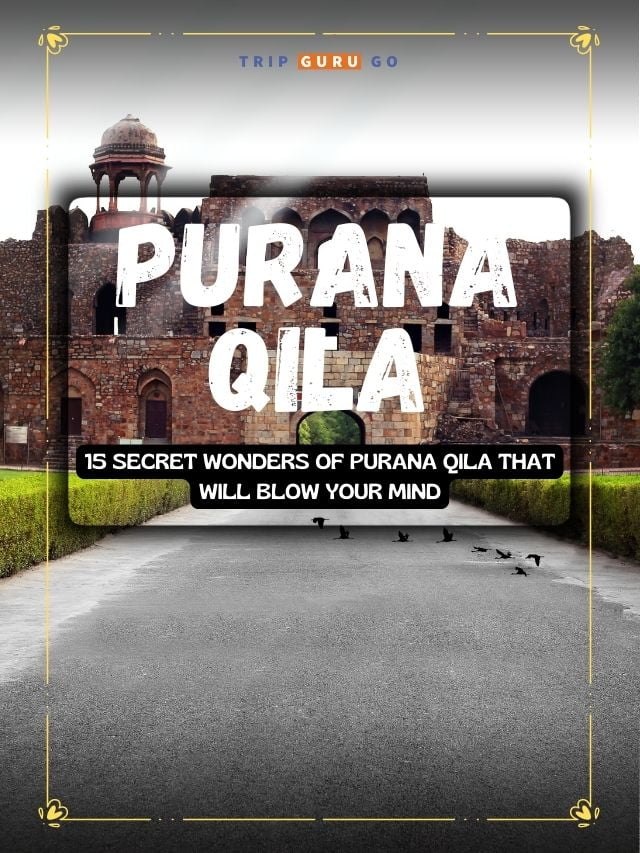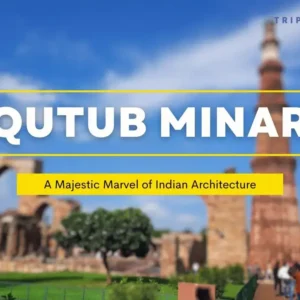Introduction
Purana Qila, often referred to as Purana Qila, showcases Delhi’s rich history and exquisite architecture. It’s an interesting look back at the past. Locals and tourists still like to go there because of its interesting history, beautiful buildings, and wide range of things to do. Visit Purana Qila, an old fort with stories about Mughal kings and empires, to learn more about Delhi’s interesting past. Many believe that Humayun, the second Mughal emperor, and Sher Shah Suri, the Surid Sultan, constructed this architectural marvel on the site of the ancient city of Indraprastha. It is part of Dinpanah’s inner fortress and tells some of the city’s past. Purana Qila is in the heart of modern Delhi, close to Pragati Maidan, and split from the Dhyanchand Stadium by Mathura Road. It is a place where you can hear the sounds of the past.
Start a trip to one of the best historical places to visit in Delhi to learn about its interesting stories and timeless beauty. This article talks about the interesting history of Delhi’s Old Fort, the amazing buildings there, and the best time to visit. This tells you everything you need to know to make the most of your time at this old fort. Let’s go on a trip to find out what stories and beauty are hiding inside the walls of Purana Quila in Delhi in 2024.
History of Purana Qila
The Old Fort, or Purana Qila, is full of Delhi’s long past. During the Mughal rule in the 1600s, Emperor Humayun chose the spot for his new city, Dinpanah, and started building the fort there. But fate got in the way when Humayun died too soon, leaving the fort unfinished.
Sher Shah Suri beat Humayun, and then the Afghan ruler took over and finished the defense. The fort’s famous limestone walls and large entrance are a mix of Afghan and Mughal types of architecture.
The Hindu epic Mahabharata states that the fort is the one that the city of Indraprastha built. This adds to the magical appeal of the fort. Purana Quila has seen a lot of history over the years, and its frightening tales and secrets continue to draw people from all over the world.
The Department of Archeology of India has helped keep this old place in good shape in a big way. So that people will remember it as an important part of history for many years to come. This fort shows how Delhi has been around for a long time. Everyone is welcome to visit the Old Fort and discover the intriguing stories hidden within its walls.
The Indraprastha Theory and Pre-Islamic Habitation
People were living in the area around 1000 BC when they made painted grayware. In 1954–1955 and 1969–1972, important digs turned up proof of the Painted Grey Ware Society. While conducting these studies, scholar Alexander Cunningham theorized a connection between the fort and the old city of Indraprastha. In reality, people used to know the Purana Qila as the “Fort of the Pandavas,” and they also used to refer to the entire complex as the “Village of Indraprastha.” And this shows how important it was in the past.
Dinpanah: The Rise of a New City
The Mughal prince Humayun constructed the new city of Dinpanah, where one can find the ruins of Purana Qila. This city grew up near the ruins of the old city of Indraprastha. Abul Fazl said that Humayun wanted to put this fort on top of the ruins of Indraprastha. Sher Shah Suri’s rule over the Suri Dynasty was a turning point. He strengthened the old building, known as Shergarh, by making additions to it. People saw his work as an extension of what Humayun had started. However, various sources provided conflicting accounts regarding the completion of the defense, leading to historical confusion.
How did Purana Qila do well and what part did it play in history
The area around Purana Qila became known as the “sixth city of Delhi.” In 1556, Hindu king Hem Chandra Vikramaditya was crowned there after beating Akbar’s forces at the Battle of Delhi. Even though the Mughals won in the end, this moment showed how important Purana Qila was in history. During this time, there were also changes to the way the walls of the fort were built.
The British Era and What It Meant
During the time that the British ruled India, Edwin Lutyens planned New Delhi. He put the center Rajpath and the Purana Qila in the same line. After the partition of India in 1947, the fort took on a role that no one expected. It became a place for Muslim refugees who were going to Pakistan to stay safe. The spot was home to many government workers and refugees, which added to its history.
The Second World War and the Internment at Purana Qila
In World War II, Purana Qila was used as a place to hold more than 2,000 Japanese people who lived in British India. In the early 1940s, internment plans were made, and the prison housed not only Japanese people but also people from other British colonies. There was much discussion and debate about the conditions in the camp and how Japanese civilians were treated. Which has cast a shadow on what was going on at that time.
Purana Qila: A Cultural Hub and Presentation Venue in Recent Years
In the 1970s, Purana Qila got a new use as a stage for theatre performances. The National School of Drama put on plays like “Tughlaq,” “Andha Yug,” and “Sultan Razia” on the walls of the fort. This trend kept going with important concerts, plays, and other cultural events. At the moment, Purana Quila has a sound and light show every evening that tells the story of Delhi’s “seven cities” from its start in Indraprastha to the present day in New Delhi. This lively presentation shows how the fort’s walls have changed over time.


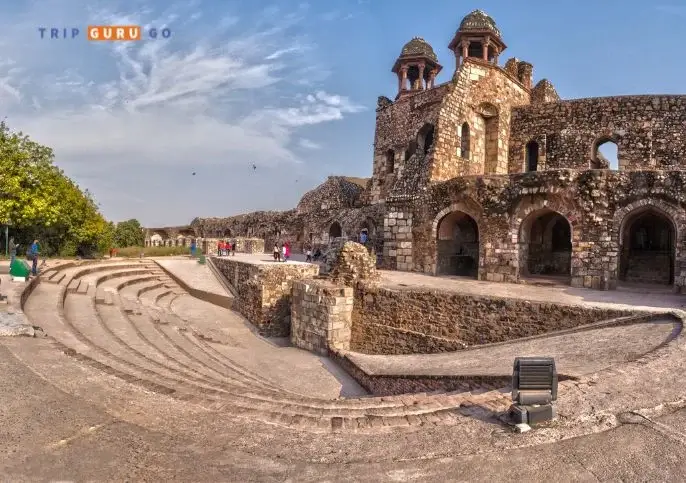
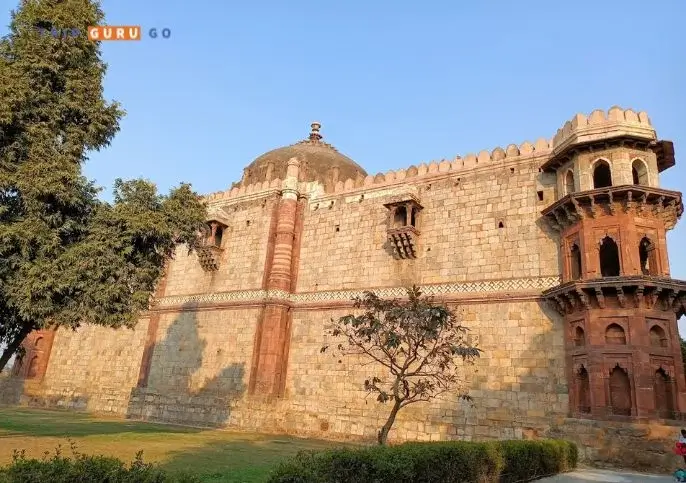
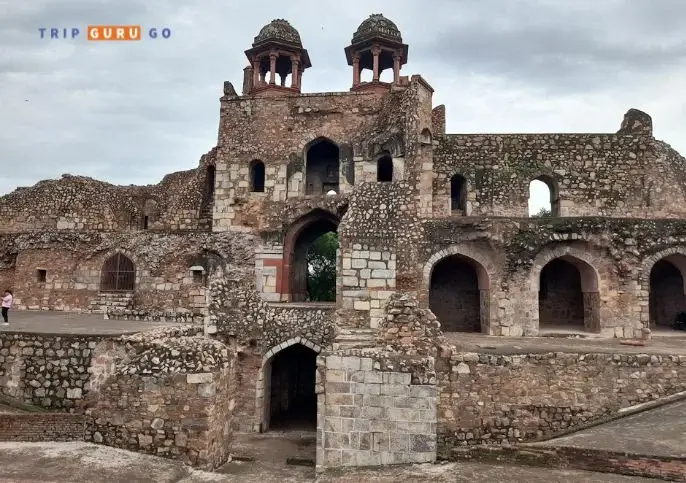
Key Historical Events at Purana Quila
Purana Qila is an old fort in Delhi that has been there since the beginning of India’s history. It has seen governments rise and fall, battles, and other important events that have shaped India’s past.
- The Foundation of Indraprastha: According to folklore, Purana Qila was built in the old city of Indraprastha, which was the home of the Pandavas in the Hindu epic Mahabharata.
- Humayun’s Accident: When Emperor Humayun fell to his death from the Sher Mandal Tower in 1556, it was a turning point for the Mughal Empire.
- Sher Shah Suri’s Rule: After Humayun was defeated, Sher Shah Suri took control of the fort, finished building it, and made it his place of power.
- Battle of Delhi: At Purana Qila in 1556, Hemu, the Prime Minister of Delhi, engaged the Mughal forces under Bairam Khan, Akbar’s successor. The Mughals came out on top.
- The Great Revolt of 1857: During the Indian Rebellion of 1857, the British used Purana Quila as a refuge. After they won, they destroyed many of the buildings inside the fort.
- Restoration by the British: The British worked on restoring the fort to make it stronger and more useful for government work.
- Independence Day Celebrations: India got its freedom in 1947, and on August 15, 1947, the first Freedom Day celebrations were held at this fort.
- Sound and Light Show: Recently, the fort has become the site of a mesmerizing sound and light show that tells the story of Delhi and Purana Qila.
- Cultural Festivals: The fort has been the site of many cultural events and festivals that celebrate India’s artistic history and encourage people from different cultures to meet and learn from each other.
The rich history of this Indian travel guide attracts tourists and history buffs. Due to this, they get a glimpse of the cultural tapestry of India.
Significance of Purana Quila Through Dynasties & Periods
The importance of Purana Qila in history goes beyond the time of Sher Shah Suri and the Mughals. During the Sultanate period, when there were different rulers, it was the center of government and management.
The fort saw the rise and fall of the Suris, the Mughals, and the British, among other powers. Each power that ruled over the old fort left a lasting mark on its culture and architecture.
Purana Qila has a long and interesting past, and it has always been a sign of power, strength, and cultural exchange. It is important to history not only because of the royal events it has seen, but also because it has been a place where art, writing, and different customs have grown.
Today, Purana Qila is a treasured cultural place that connects young people to the rich history of Delhi and the varied history of India. As you discover the nooks and crannies of this old fort, you will be taken back in time and learn about the memory of many kingdoms that have had a lasting effect on India’s history.
Architectural Marvels of Purana Qila
Purana Qila, also called the Old Fort, is a beautiful piece of architecture that combines Mughal and Afghan styles. Its size and historical importance draw people to it. Let’s look at some of the beautiful buildings that make Purana Quila a treasured cultural place.
1. The Great Doors
As you get closer to Purana Qila, the Bara Darwaza, the Humayun Darwaza, and the Talaqi Darwaza all standout. Each gate has detailed carvings, beautiful designs, and tall structures that leave people in awe of the work that went into making them.
2. Mosque of Qila-i-Kuhna
The Qila-i-Kuhna Mosque, which is part of Purana Qila, is a great example of how talented Sher Shah Suri was as a builder. Its double dome and beautifully carved pillars show how creative the builders were and how well Hindu and Islamic styles of architecture work together.
3. Sher Mandal at the King’s Observatory
Sher Mandal is a two-story, eight-sided tower inside the old fort. Emperor Humayun used it as his telescope. Here was where the terrible accident happened, which caused the ruler to die too soon. The form and plan of the tower show how far science and architecture had come during that time.
4. The walls and bastions of the fort
Huge rock walls and bastions surround the fort, giving it protection and strength. The walls are decorated with designs and themes that show how artistic the Mughals were. This makes Purana Qila a strong fortress.
5. Details of the Palace’s building
Even though the buildings in Purana Qila are no longer standing, parts of them still have elaborate paintings and patterns. When people look at the ruins of once-granded rooms and chambers, they can imagine how grand they were.
6. Purana Quila’s Water Gate and Baoli
The fact that the fort has a water gate and a stepwell (baoli) shows how important water control was back then. The builders were smart about water conservation because they made sure the baoli was orderly and put the watergate in a good spot.
7. The Mix of Buildings
What makes Purana Qila unique is that it is built in both Mughal and Afghan styles. The Mughals built the fort, and Sher Shah Suri and his successors added their touches to it. The result is a stunning mix of different building styles.
8. The Beauty That Lasts
Even though ages have passed and many historical events have happened, Purana Qila still stands tall, keeping its beauty and artistic brilliance. It is a live heritage that tells stories about times gone by to anyone who wants to hear them.
9. Sound and Light Show Purana Quila
The sound and light show at Purana Qila at night is a great way to make the trip more interesting. The show brings history to life by telling the fascinating stories that happened inside the walls of the fort.
10. Keeping history alive for the future
The Archaeological Survey of India was very important in keeping Purana Qila and all its building wonders in good shape. Their work makes sure that future generations will still be able to enjoy and value the rich history that this old fort represents.
Treasures within the Purana Qila “Old Fort”
It is also called the “Old Fort,” and it is not only a great piece of architecture but also a great deal of history and culture. Numerous treasures greet visitors as they enter this ancient fortress and tell tales of Delhi’s past. Let’s go on a trip to find the fascinating treasures that are hidden in Purana Qila.
1. Mughal and Afghan Heritage at Purana Quila
Purana Qila is a place where the past of the Mughals and the Afghans meet. Every brick and stone in its walls tells a story about a ruler, a fight, or a victory. The rich history that has shaped Delhi into what it is today will be all around visitors as they explore the fort.
2. The Haunting Legends
The eerie stories about Purana Qila are one of its most interesting parts. As the sun goes down and night falls, stories about Djinns and other magical animals come to life. The creepy atmosphere and strange stories make the historical experience more interesting.
3. Ancient Artifacts and Artistry
Inside Purana Qila, the Archaeological Survey of India has found a great trove of old artifacts. Ancient pots, coins, and pieces of carving give us a taste of how talented the people who lived in the area in the past were as artists.
4. The Historical Gates
The Bara Darwaza, the Humayun Darwaza, and the Talaqi Darwaza are all grand entrances to Purana Qila. Each is a rare prize in its own right. Each gate tells a story of power, success, and building skill, and they all lead to the heart of the fort in a grand way.
5. The Enchanting Gardens
In addition to the historical buildings, Purana Qila has well-kept grounds that are a quiet place to get away from the busy city. The lush grass and blooming plants are a gift for people who love nature and give tourists a peaceful feeling.
6. Sound and Light Show
The beautiful sound and light show at Purana Qila is a gem that brings Delhi’s past to life. The engaging story and beautiful pictures take the audience back in time so they can remember how grand things used to be.
7. Cultural Events and Festivals
There are many cultural events and gatherings held at Purana Qila all through the year. The Qutub Festival, which happens every year, is a great trove of music, dance, and art that shows off the city’s cultural history.
9. The Fort Walls and Bastions
The amazing height and design of the fort walls and bastions remind tourists of when Purana Qila was used for defense. The stories that are inside the fort are safe behind these strong walls.
10. The Timeless Stories
Above all, the real gems of Purana Qila are the stories that have been told there for centuries. The fort is a live record of Delhi’s past because every stone, every building, and every corner has seen nations rise and fall.
Life and Culture Across Different Periods in Purana Qila
Purana Qila has witnessed diverse periods of history, each leaving a unique mark on its life and culture.
Mughal Era (16th Century):
- Bustling Markets: Colorful markets bustled with traders selling spices, fabrics, and precious gems.
- Royal Palaces: Magnificent palaces adorned with intricate carvings and lush gardens hosted lavish feasts and cultural gatherings.
- Traditional Attire: People dressed in vibrant attire, reflecting the rich Mughal culture.
Sher Shah Suri’s Rule (16th Century):
- Military Fortification: Under Sher Shah Suri, the fort underwent military fortification, making it a stronghold.
- Administrative Reforms: Sher Shah introduced administrative reforms to improve governance and infrastructure.
British Colonial Era (19th Century):
- British Influence: British colonial rule impacted daily life, introducing Western education and governance.
- Cultural Exchange: The British brought their traditions, leading to a blend of Indian and British customs.
Post-Independence (20th Century):
- National Importance: Purana Qila became a symbol of India’s history and struggle for independence.
- Cultural Events: The fort became a venue for cultural events and festivals, celebrating India’s diversity.
Modern Times (21st Century):
- Tourist Attraction: Purana Qila attracts tourists, offering a glimpse into India’s glorious past.
- Sound and Light Show: A fascinating show tells the history of the fort, making it both educational and fun.
Purana Qila’s history reflects the vibrant tapestry of India’s cultural heritage, captivating visitors of all ages.
Purana Qila in Modern Times
The Old Fort sits in the middle of a busy modern city, telling us of its interesting history and importance in the past. This old building marvel has become a place that both tourists and locals love to visit.
Purana Quila Preservation and Restoration Projects
Purana Qila has been the focus of protection and repair projects in the modern era. This is because of its historical importance. The goal is to protect this beautiful building and make sure that its history stays the same so that future generations can enjoy it.
Archaeologists and conservationists have worked to restore and strengthen the old walls, gates, and bastions of the fort. To honor the painters’ skill, the fort has preserved its intricate carvings and artwork.
Additionally, restoration projects have diligently endeavored to uphold the original style of the Purana Qila building. By employing traditional methods and materials, these initiatives have successfully restored the fort to its former glory. These concerted efforts have not only ensured the fort’s physical preservation but have also safeguarded its rich history.
Purana Qila: Embracing Modernity, Preserving History
- Preserving History: Even though time has passed, Purana Qila is still in good shape, thanks to the work of the Archaeological Survey of India. Its walls, gates, and other complicated buildings still tell stories about the past.
- Tourist Attraction: This old fort is a place that people come from all over the world to see. Tourists come to see its big gates, the beautiful Qila-i-Kuhna Mosque, and the interesting Sher Mandal.
- Historical Significance: The fort is an important part of India’s past. It was there when great powers rose and fell, so it is a live reminder of the country’s rich history.
- Cultural Events: Purana Qila has become an attraction for culture, with events like sound and light shows that are mesmerizing. This show brings history to life, captivating audiences with its enchanting storytelling.
- Educational Tours: Guided tours of Purana Qila are a great way to learn about the fort’s past and amazing architecture. It’s a great way for kids and people interested in history to learn.
- Photography Paradise: Purana Qila splendor delights photographers. The grand architecture and tranquil settings provide for wonderful photos.
- A Place of Peace: Purana Qila is a quiet place to get away from the busy city. Visitors can walk through the grounds, have lunch, or enjoy the feeling of being in a place with a lot of history.
This old fort, which is still standing today, connects the past and the present. It will always be a memory of India’s rich cultural history and brilliant architecture.
Visitor Information for Purana Qila
Nearby Metro and Railway Stations of Purana Qila:
- The nearest metro station to Purana Qila is the Supreme Court (Pragati Maidan) Metro Station, which is on the Blue Line of the Delhi Metro. From there, people can either take a short ride in an auto-rickshaw or walk to the fort.
- Hazrat Nizamuddin Railway stop is about 5 kilometers away and is the closest train stop for people coming by train.
What to See at Purana Qila:
1. Qila-i-Kuhna Mosque:
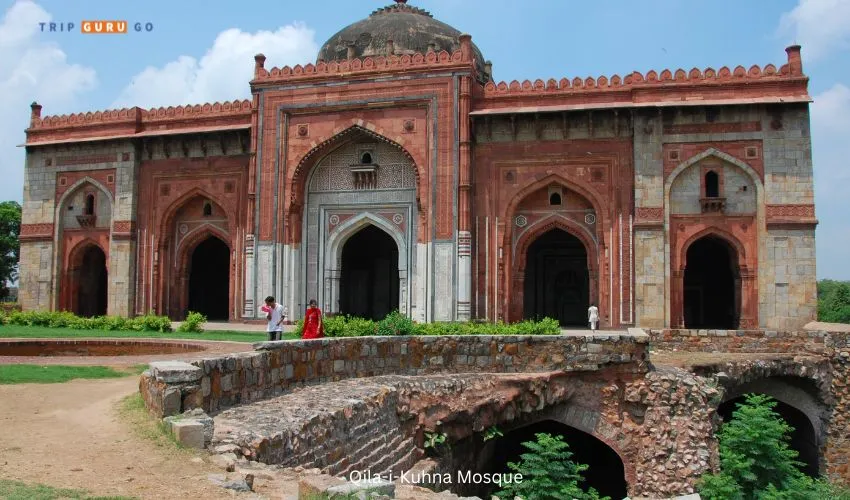
The Qila-i-Kuhna Mosque, located inside Purana Qila (the Old Fort) in Delhi, is a beautiful ancient building. It was built by Sher Shah Suri and has a unique design with a double dome and detailed carvings. This mosque is a peaceful and historical place, and it’s a must-visit for people who love history and want to explore Delhi’s past.
2. Sher Mandal:
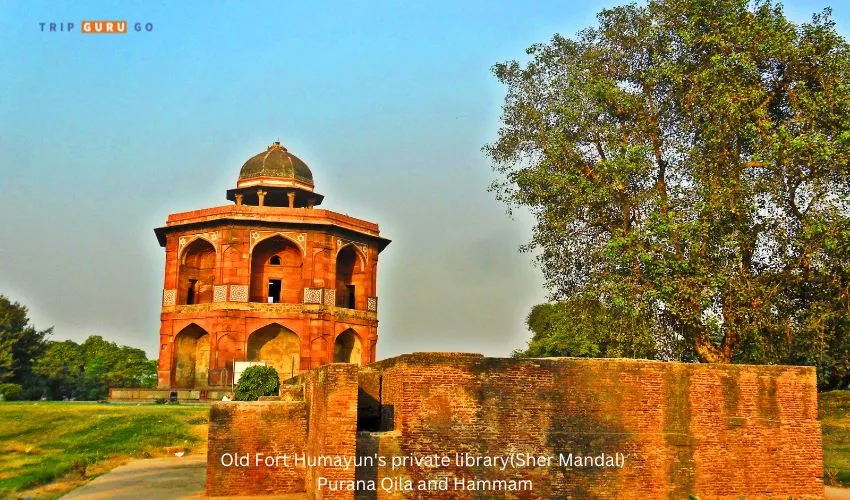
The Sher Mandal, which is in Delhi’s Purana Qila (the Old Fort), has a lot of historical significance. This circular tower with two floors was used by Emperor Humayun as a telescope. The sad thing is that the ruler died here before his time. Today, Sher Mandal stands as a memory of how far science and architecture have come in the past. It draws curious tourists who want to learn more about Delhi’s long history.
| Aspect | Visitor Information |
|---|---|
| Location | J65V+RFH, Mathura Rd, Near Delhi Zoo, New Delhi, Delhi 110003 |
| Opening Hours | Sunrise to Sunset – 7:00 A.M |
| Closing Time | Before Nightfall – 5:00 pm |
| Entry Fee | Minimal (Indian citizens and SAARC countries) For Indians 20 INR Per Person, For Forginers 200 INR Per Person. |
| Guided Tours | Available |
| Sound and Light Show | Evening timings |
| Photography | Allowed inside the fort and for videography 25 INR (video camera) |
| Accessibility | Wheelchair accessible |
| Nearby Attractions | Delhi Zoo, India Gate, Humayun’s Tomb, Akshardham Temple , Rashtrapati Bhavan , ISKCON Temple Delhi |
| Picnicking | Allowed in the gardens |
| Safety Measures | Follow designated pathways and safety guidelines |
How to Reach Purana Qila?
Follow these easy steps to get to Purana Qila:
- Choose your way of getting around: Depending on where you are starting from and how much time you have, you can take the train, bus, car, or even walk.
- By Metro: The nearest metro station to Purana Qila is Pragati Maidan on the Blue Line. You can either take a short walk or drive to get to the fort.
- By Bus: Several cars can take you to Purana Qila. Look for buses going to Pragati Maidan or Delhi Zoo. The stops for these buses are close to the entrance to the fort.
- By Taxi or Auto-Rickshaw: There are taxis and auto-rickshaws all over Delhi. Tell the driver where you want to go, which is Purana Qila, and they will take you there.
- Walking Directions: If you are nearby, you might want to walk to Purana Qila. It’s a great way to see what’s around you and take in the scene.
Remember that Purana Qila is a well-known historical place in Delhi, so it’s always a good idea to ask a local for instructions. Enjoy your trip to this amazing place of history!
Conclusion
As you travel to Purana Qila, you will pass through the ages of history, culture, and amazing buildings. This historical place, with its well-preserved history and cultural significance, is a fascinating way to know about the glorious past of Delhi and India. Enjoy learning about the Old Fort and other historical sites in the area. Appreciate the valuable insights into India’s rich history that you’ve gained.
Frequently Asked Questions (FAQs) About Purana Qila
Yes, Purana Qila offers a mix of history and fun activities, making it a great place for family vacations.
Purana Qila is best visited in the winter, from October to March, when the weather is suitable for exploring.
Qualified guides indeed provide guided tours that give information about the history and importance of the fort.
Yes, photography is allowed inside the fort, so visitors can capture the beauty of its architecture and surroundings.
Purana Qila, also known as the Old Fort, was built by Sher Shah Suri, an Afghan ruler, in the 16th century for strategic and defensive purposes.
Purana Qila has an entrance charge of Rs. 20 for Indians and Rs. 200 for foreign visitors.
The ancient city of “Indraprastha,” which appears in the Indian epic “Mahabharata,” was the original name of Purana Qila. During Sher Shah Suri’s rule, it acquired the name “Purana Qila”.


